Hey everyone! For my blog, this week I am going to talk about a very special group of monkeys, the Leaf eating Monkeys. They live in a subfamily group called Colobinae and are typically found throughout Africa and Asia and are long-tailed, tree dwelling monkeys that depend almost entirely on leaves as the main part of their diet.
What makes these species unique is their unusual stomach which allows them to digest leaves more efficiently than any other species of primate on the planet. Unlike other primates, monkeys that are in the colobinae family lack cheek pouches (large areas of excess skin in their cheeks to store food) and in most species they also have very little or barely evident thumbs.
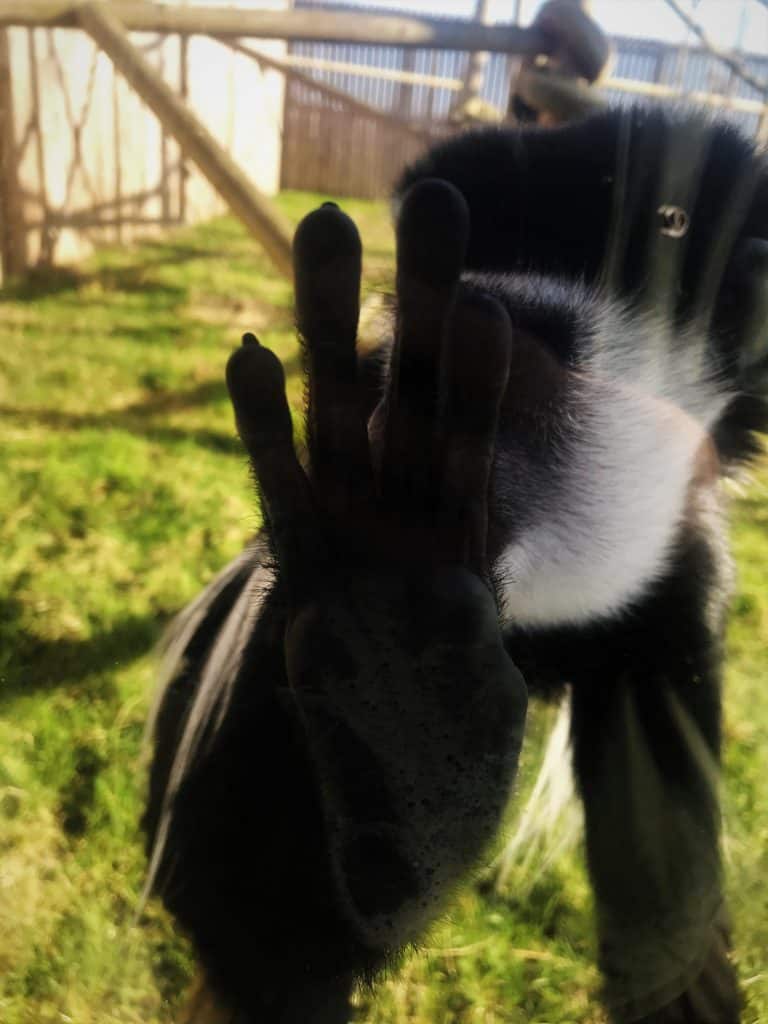
Black and White Colobus
There are over 50 species of Colobinae including the long-nosed Proboscis monkey (Nasalis larvatus), bright coloured Douc monkeys and more specifically the species in my blog this week the flamboyant Black and white colobus (Colobus guereza), also known simply as the guereza, the eastern black-and-white colobus, or the Abyssinian black-and-white colobus.
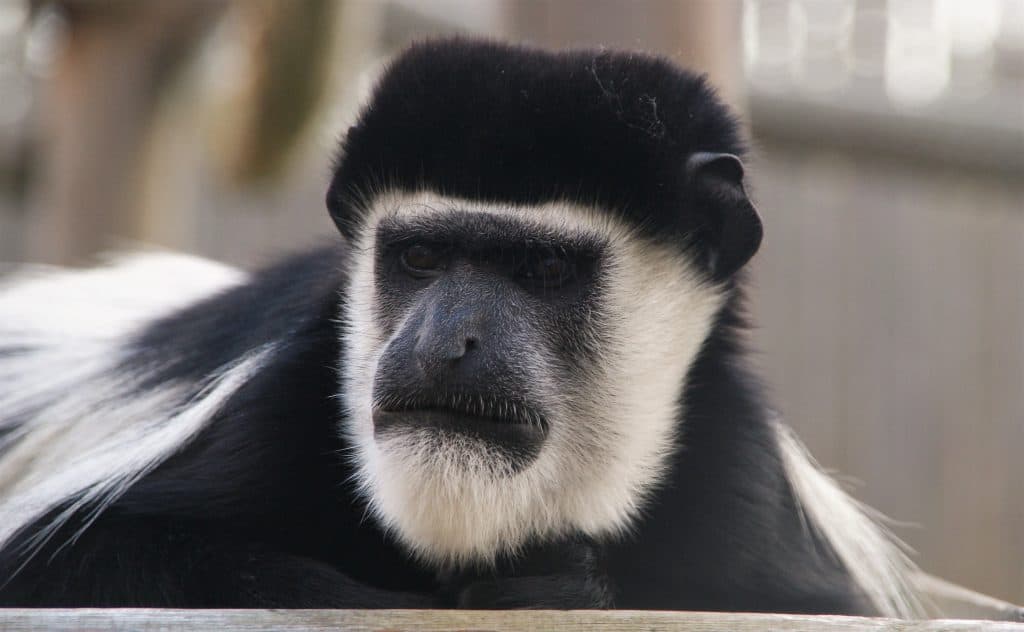
It is native to much of central Africa, including Cameroon, Nigeria, Ethiopia, Kenya and Uganda. The species consists of several subspecies that differ slightly in appearance. It has a very distinctive appearance, with long white fringes of hair that run along each side of its black trunk are known as a mantle (hence the other name for them, Mantled Colobus) and its face is outlined with white hair and it has a very large white tufted tail.
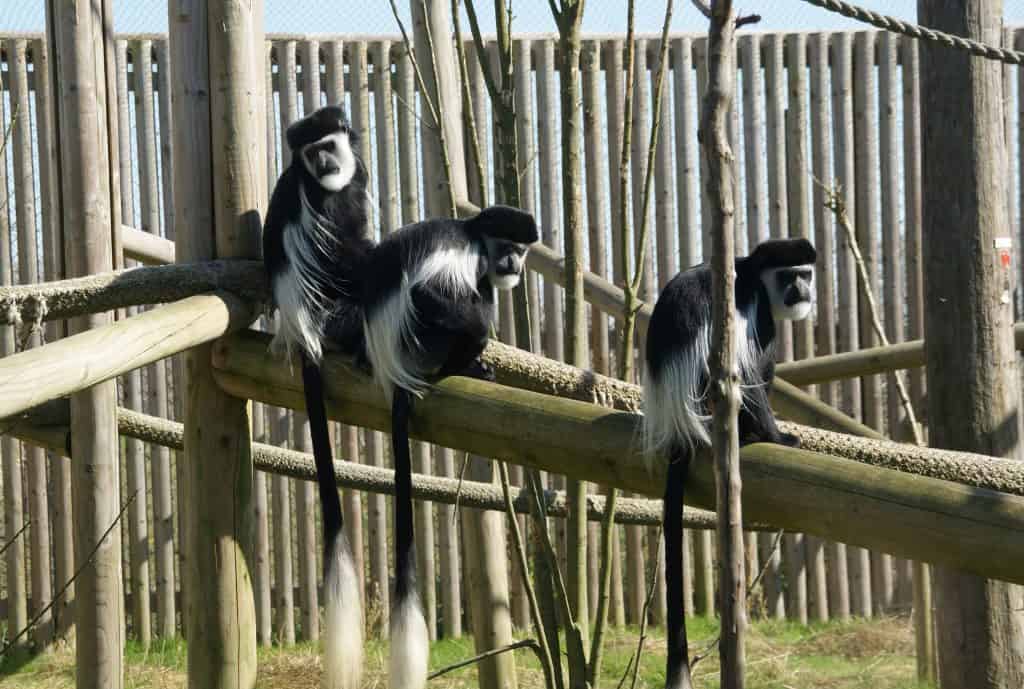
Behaviour
The black and white colobus is a diurnal (active during the day) and arboreal species (spends majority of time up in the tree canopies). It is found in both deciduous and evergreen forests making it a highly adaptable species. They can cope with habitat disturbance and quick changes to their environment but have been known to prefer forests close to rivers or lakes.
Although previously thought only to eat leaves, it also eats seeds, fruits, and insects. As mentioned earlier it is able to digest plant material with a high fibre content thanks to its specialised stomach and may only eat from a few plant species at a time. The biggest feature for the colobine stomach is that it is partitioned into sacs or is sacculated. Each chamber or sac has a unique purpose, the upper areas are essential for fermentation of leafy materials and their lower stomach helps with digestion with assistance from their enlarged salivary glands.
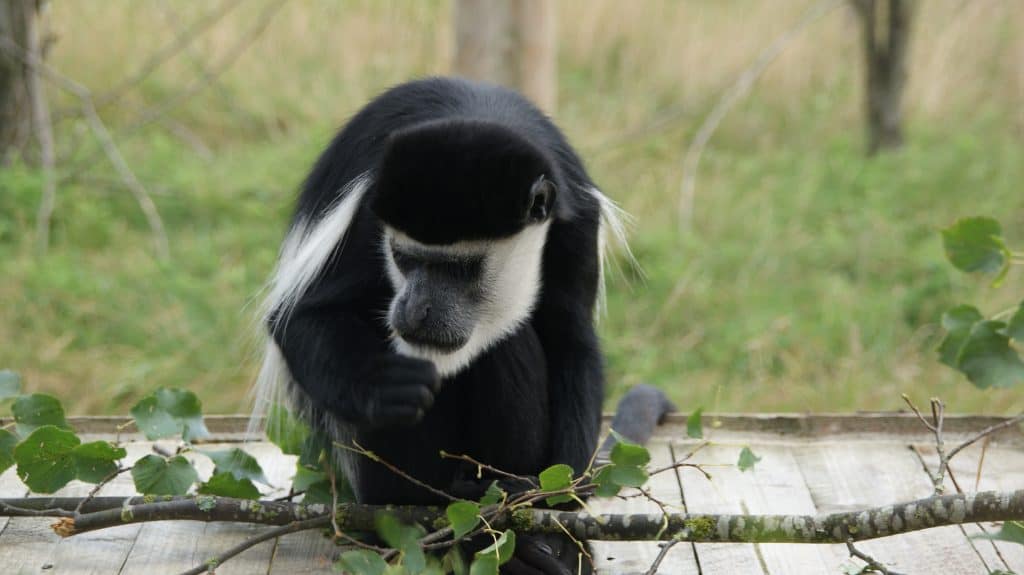
Because the food they eat is so low in nutrition, their stomachs are enlarged to accommodate for large intakes of food (up to a quarter of their body weight) and with their adapted stomachs colobines can digest plant toxins that can be fatal to other primates and also cellulose (components in all leaves) and release it as energy throughout the day.
The black and white colobus are a social primate and can live in social groups of anywhere between three to fifteen individuals. These groups normally include a dominant male, several females, and the offspring of the females. Here at Wingham Wildlife Park we have 4 males living in a bachelor group.
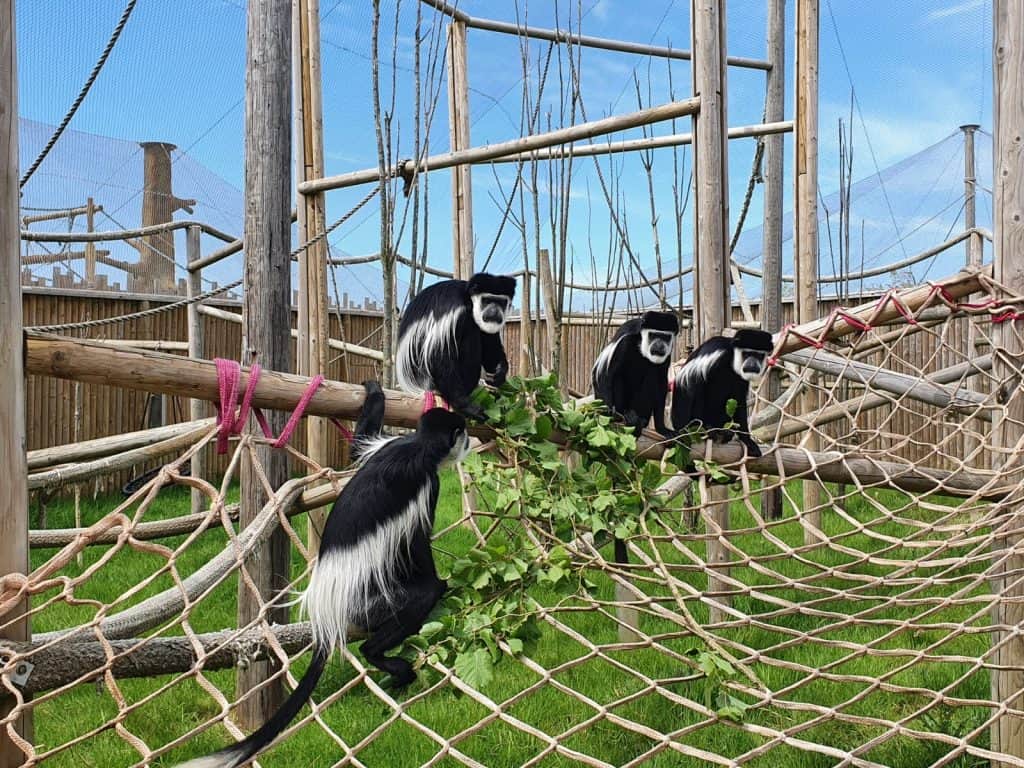
It has a polygamous mating system (meaning the males will have several different females to mate with) and mating is usually initiated with vocal communication such as grunts, barks and roars. Females gestate for around 5 months and offspring are born with pink skin and white fur, which then gets darker as they reach adulthood.
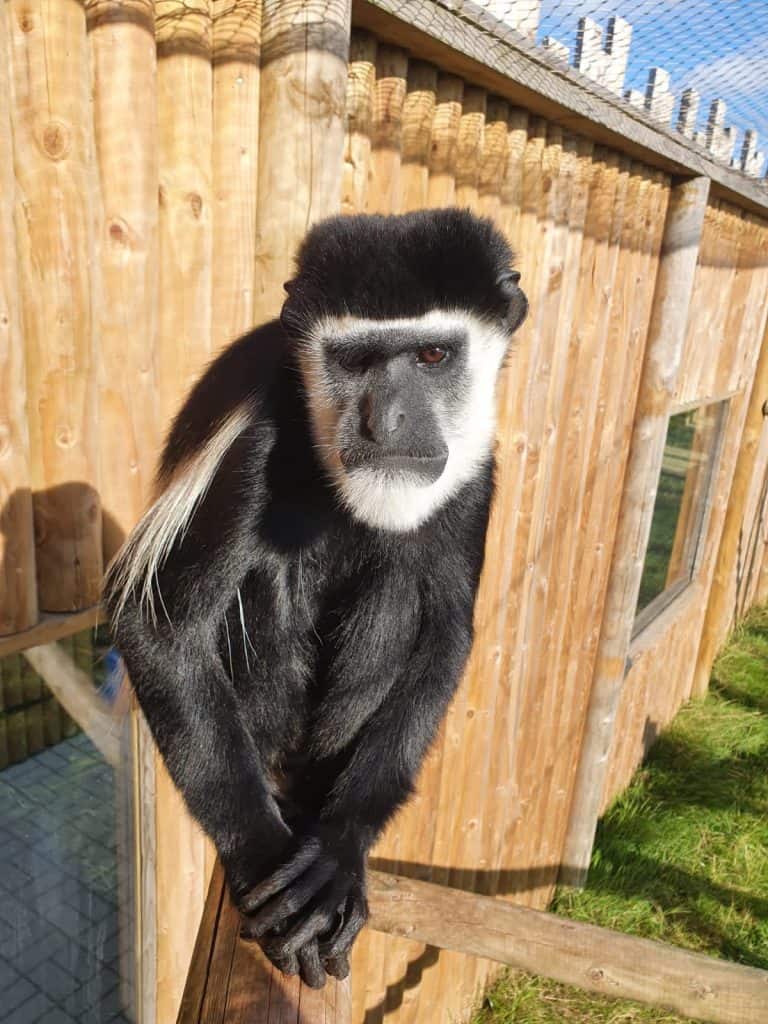
Threats
The black and white colobus is listed as Least Concern by the International Union for the Conservation of Nature (IUCN) because it is widespread.
This being said this doesn’t mean they don’t face any threats in the wild. Their natural predators include large birds of prey and mammals, including the common chimpanzee and the leopard. They also face decline in more local areas too mainly due to the bushmeat trade and the black market for the sale of its skin and hair. Unfortunately habitat loss is also a concern which threatens this species- as it does for all non-human primates.
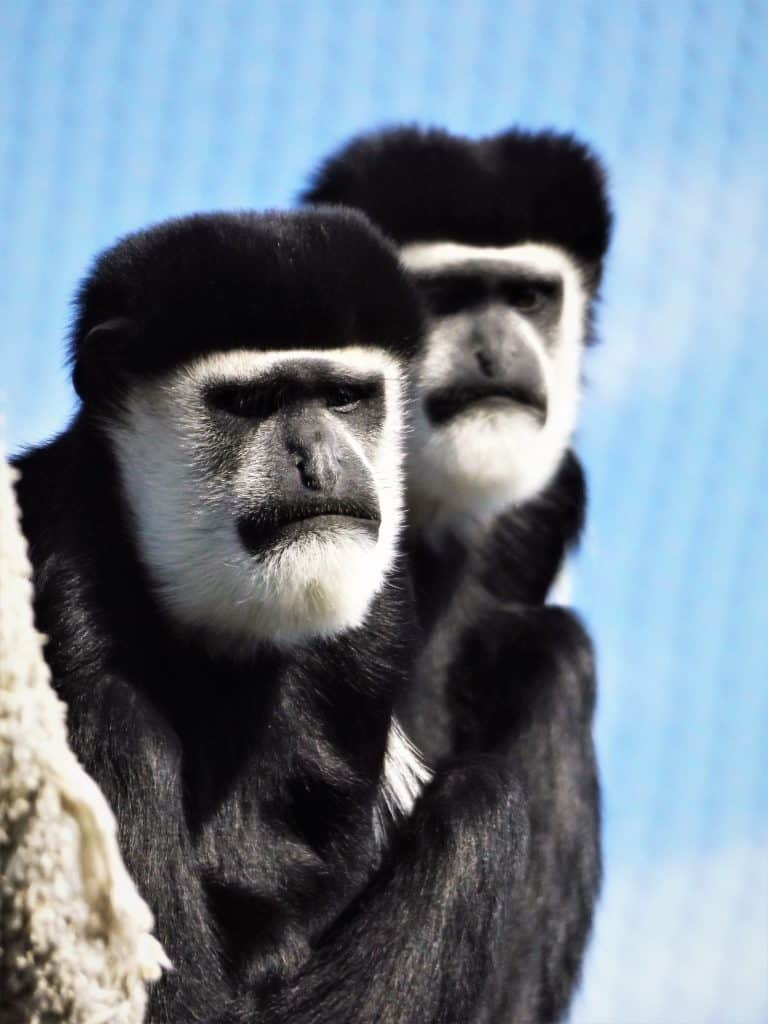
If you have the chance please come to visit the park to see our 4 beautiful black and white colobus monkeys Ronnie, Reggie, Rupert and Roger when we are able to re-open.


